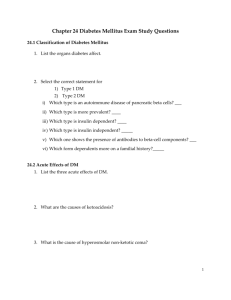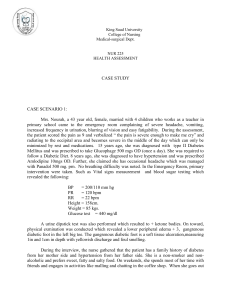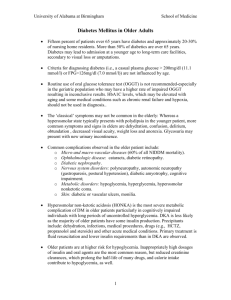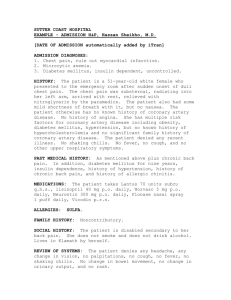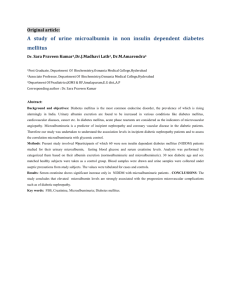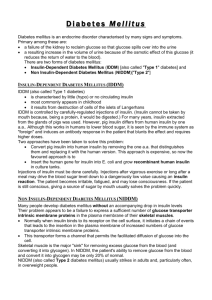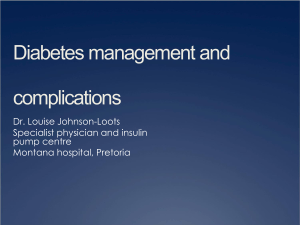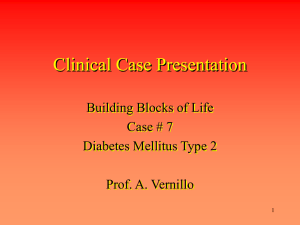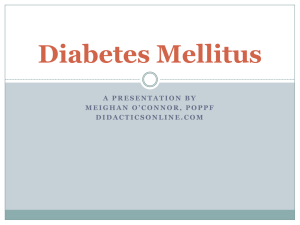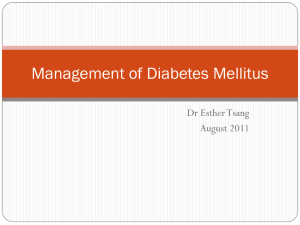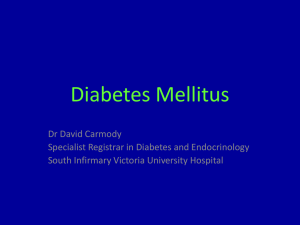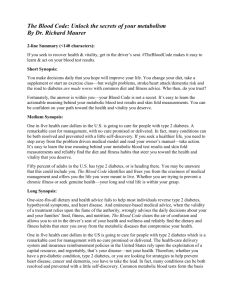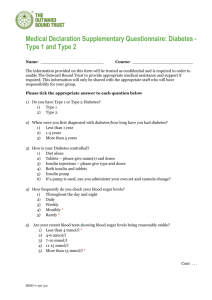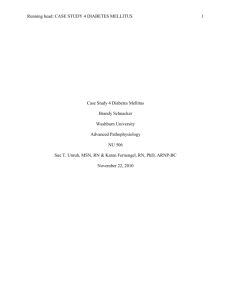Nursing Care of Children Experiencing Diabetes Mellitus
advertisement
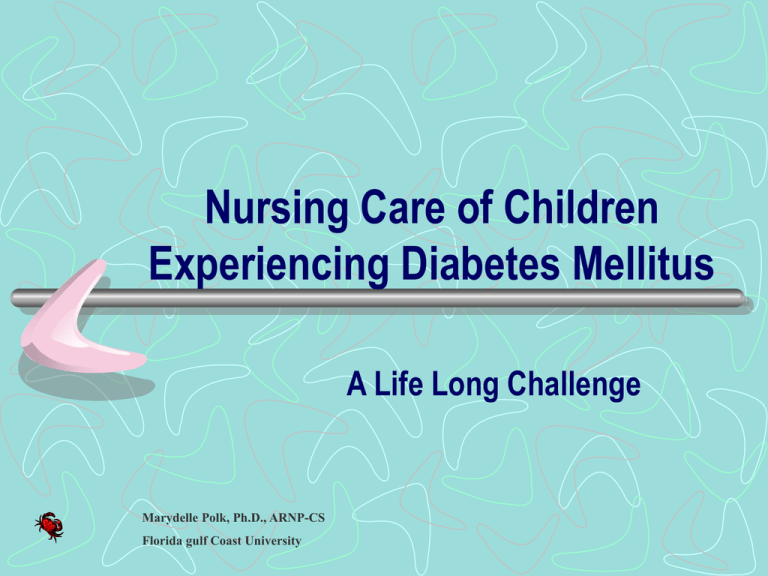
Nursing Care of Children Experiencing Diabetes Mellitus A Life Long Challenge Marydelle Polk, Ph.D., ARNP-CS Florida gulf Coast University Session Objectives • Review the pathophysiological processes that occur diabetes mellitus. • Use nursing assessment skills to identify adaptive and non-adaptive behaviors that may be exhibited by the client and client family. • Use lab/diagnostic data to enhance your nursing assessment(s). Session Objectives • • • Identify common nursing diagnoses that can be drawn after an assessment of a child with diabetes mellitus. Identify and specifically describe nursing care given to a pediatric client with diabetes mellitus. Identify and specifically describe means of evaluation nursing coventions that correlate with medical orders and interventions for pediatric clients with diabetes mellitus. Definition of Diabetes Mellitus (DM) • Chronic disorder • Partial or complete absence of insulin • Very common – 20 per 100,000 children & adolescents • Peak incidence between 10 – 25 years-of-age • Incidence of Type 1 is in whites, boys than girls Classification • Type 1 – Absolute insulin deficiency * Immune-mediated DM * Idiopathic Type 1 Classification • Type 2 DM * Insulin resistance with relative insulin deficiency * Maturity-onset diabetes of the young (MODY) Etiology • Multi-focal * * * * Genetic predisposition Autoimmune dysfunction Diet Viruses Clinical Manifestations of DM Early Late 1. Excessive drinking (polydipsia) 2. Polyuria 3. Polyphagia 4. Weight loss 5. Enuresis (secondary) • • • • • • Vomiting Dehydration Abdominal pain Hypovolemic shock Hyperventilation due to _______? Drowsiness Coma Aims of Long-term Management • Normal growth and development • Maintaining as normal a home and school life as possible • Good diabetic control through knowledge, good technique, and self reliance • Avoidance of hypoglycemia • Prevention of long term complications How DM Interferes with Normal Adolescence Tasks of adolescence Delayed sexual maturation Invasion of privacy Conformity with peer group Meals must be eaten on time Frequent injections and blood tests Self-image Hypoglycemic attacks show how they are different How DM interferes with Normal Adolescence Self-esteem Impaired body image Independence from parents Parental protection and reluctance to allow to allow their child to be away from home Battles over diabetes Economic independence Loading of insurance premiums Discrimination by employers Ketoacidosis Clinical Manifestations • • • • • • • Kussmaul Respirations with acetone breath Polyuria with ketouria pH with hyperkalemia Blood glucose Dry skin, mucus membranes (dehydration) Confused, lethargic coma Weak pulse, diminished reflexes Ketoacidosis Clinical Management The aim is to restore adequate hydration, blood glucose levels and electrolyte balance • Obtain a venous access line • Laboratory studies • Fluid, insulin and electrolyte replacement *** Before administering potassium – always make sure the child has an adequate urinary output – 25-30 mL/hr Nursing Diagnoses • Risk for injury r/t insulin deficiency • Risk for injury r/t hypoglycemia • Knowledge deficit r/t diabetes management
